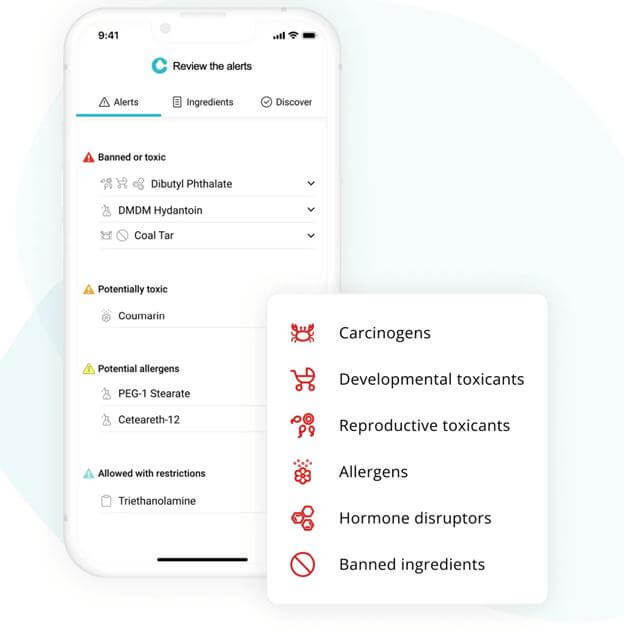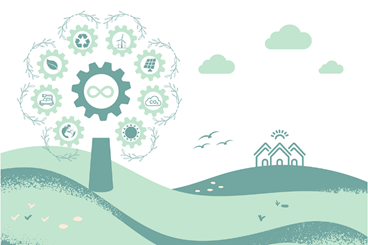August 2025: Protecting Kids & Pets from Toxics
In this edition:
- Uniting Climate, Chemicals, and Circularity
- Simpler Safer Shopping with Clearya
- POP Goes The Mink
- From Toxicity to Transport: Why All Chlorinated Paraffins need Regulation
- Green Science Policy Institute in the News
- Calendar
I hope you are having a good summer and perhaps starting to get ready for fall. If you have children in your life, you may be planning back-to-school shopping.
We’ve heard from parents that some schools have supply lists asking children to bring disinfecting wipes to use on their desks. To investigate how common this is, we looked at school supply lists from around the country on TeacherLists, the
most popular school list platform. We were concerned to find that most schools include " Disinfecting Wipes” on their lists.
These products often contain quaternary ammonium compounds (QACs or quats), which are linked to reproductive, developmental, respiratory, neurological, and dermal harms. They also contribute to antimicrobial resistance, a global crisis that’s making critical antibiotics less effective. And new research shows that they harm mitochondria, which are the main source of energy production in our cells.
Kids shouldn’t be using these wipes on their desks. In fact, it goes against the manufacturers’ own guidance to “keep it out of the reach of children.” It is also against the law to have students use disinfectants in public K-12 schools in California. The CDC recommends using regular soap and water for cleaning surfaces as it is the safest and most effective way to remove germs and there is not a potential for harm.
Does your child’s school back-to-school supply list include disinfecting wipes or other antimicrobial products? If you want to try to remedy that, we can send you a sample letter a parent wrote their school principal who then removed disinfecting wipes from the school's supply list. Please write [email protected] for a copy of the letters as an example if you’d like to encourage your child’s school to do the same.
This time of year is also flea and tick season for pets. Did you know that pesticides banned from agricultural use in parts of Europe and California are still used in topical flea treatments for pets? The pesticides, fipronil and imidacloprid, are toxic to aquatic invertebrates and are making their way from pets’ fur to waterways and even bird nests. Read more about this problem and better alternatives in my latest Forbes column.
This week we are hoping for a positive outcome from the global plastic treaty negotiations that are happening right now in Geneva, Switzerland. If successful, a legally binding global treaty would end plastic pollution across the lifecycle of plastics. A very important but contentious part is winding down plastic production—especially of single-use and harmful plastics containing toxic ingredients. Major oil and plasticproducing nations such as Russia, China, India, and the U.S. support a voluntary treaty focused on managing waste, with no limits on production.
Several of our colleagues have innovative ideas for how to tackle plastics. For example, our Senior Fellow Lauren Heine is developing a certification system for the chemicals in plastic to stop the use of the most harmful substances. “An ideal world would be free of plastics in the wrong place. But perhaps focusing on the riskiest plastics first will help us to get there,” Lauren says. You can learn more from her newsletter piece last month on plastics.
Finally, many of us are very concerned about federal government cutbacks that threaten scientific research, public health, and the future of our young scientists here in the United States. In order to help current PhD and postdoctoral students whose career trajectories may be impacted by reduced research funding and federal staffing cuts, the Green Science Policy Institute is offering a mentoring opportunity for U.S. PhD students and Postdoctoral Fellows in environmental science and engineering who are looking for guidance on future careers. Participants will be matched with our Senior Fellows as mentors. Please get in touch if you or someone in your network might be interested.
Kind regards,
Arlene and the Green Science Policy team
Uniting Climate, Chemicals, and Circularity
By Meredith Williams, Green Science Policy Senior Fellow
The science is clear that we are approaching—or even exceeding—the planetary boundaries for climate, plastics, and toxics. These are daunting problems, but possible efficiencies could be realized if we tackle them together rather than as individual, unconnected issues. This is becoming more widely recognized although integrative approaches are not always obvious. That’s because the links between these challenges aren’t always clear. For example, those focused on decarbonizing chemical production may not consider the importance of detoxifying products in order to improve recycling and reuse.
In February, the EU published its roadmap for the Clean Industrial Deal. The Communication states that “There must be a clear link between incentives for decarbonisation and circularity efforts by industry.” (p.8). It argues for the importance of
“placing circularity at the core of our decarbonisation strategy.” But in the Communication, there is no mention of toxicity and only two mentions of chemicals. Harmful chemicals compromise circularity – compromising recyclability or perpetuating exposure to harmful chemicals during reuse.
On July 7, the European Commission presented an Action Plan for the Chemicals Industry. It has objectives for both decarbonization of chemical manufacturing and innovation for more safe and sustainable chemistries. It’s reasonable to expect that green chemistry and sustainable chemistry advances resulting from the Action Plan will support the Clean Industrial Deal. It should be noted, however, that NGOs have voiced significant concerns that industry has weakened the protectiveness of the Action Plan.
U.S. environmental advocates and policy makers often look to Europe for models of protective policies. The ambitious European initiatives have the potential to achieve circularity, climate, and chemical pollution goals together.
Simpler Safer Shopping with Clearya
By Ariana Spentzos, updated by Amit Rosner
Have you ever had the experience of staring at a product label, head swimming with complicated or vague chemical names, trying to determine if that product is safe for you and your family?

When shopping for personal care products, we recommend trying the free app and browser plug-in Clearya, which shows alerts for unsafe ingredients that appear on lists of hazardous chemicals compiled by regulators and scientists.
In-store, you can snap a label photo and have it analyzed in seconds. You can see it in action in this quick demo.
Shopping online? You can use Clearya at websites of major retailers like Target and Sephora to automatically be informed if products contain harmful ingredients. This short guide explains how to make the most of it.
While it’s unfortunate that much of the work of choosing safer products still falls to consumers, tools like Clearya help bridge the gap as we catch up on policies for safer products.
Clearya is also collaborating with state regulators, researchers, and advocacy groups. More on that in next month’s newsletter.
POP Goes The Mink
Canadian governmental research found that persistent organic pollutants (POPs) harm the development of wild mink. By analyzing the bodies of more than 150 mink, the researchers discovered that higher levels of halogenated chemicals were associated with damaged bodies and smaller reproductive organs in male mink. Elevated exposure to PBDE flame retardants were related to abnormalities, lesions, and parasites in juvenile mink. Levels of DDE, a chemical cousin of DDT, were correlated to smaller reproductive organs in adult male mink.
These findings mean more than just awkward moments in mink locker rooms: As a top predator with a mostly aquatic diet, mink are a "sentinel species" whose reproduction and health is being harmed by chemicals which were banned decades ago. This means that male reproductive development in other wild animals-and perhaps even humans-may also suffer. To learn more about these contaminants and our six chemical classes of concern, check out our short videos at SixClasses.org.
From Toxicity to Transport: Why All Chlorinated Paraffins need Regulation
By Seth Rojello Fernández
Did you know that chlorinated paraffins (CPs) are harmful chemicals produced globally by the millions of tons—and have recently been found to drift through the open air?

Chlorinated paraffins are used as flame retardants, plasticizers, and lubricants. These harmful chemicals are made by adding chlorine to oil-like substances made up of mixtures of carbon chains of different lengths called paraffins. Millions of tons of
chlorinated paraffins are now produced worldwide. They are found in children’s toys and other consumer products, suggesting children's likely exposure. Chlorinated paraffins are divided into short-chain (SCCPs with 10–13 carbons), medium-chain (MCCPs with 14–17 carbons), and long-chain (LCCPs with more than18 carbons).
The small SCCPs were listed for elimination under the Stockholm Convention in 2017 due to their persistence, toxicity, and bioaccumulation potential. However, they are still detected at high concentrations in indoor dust and a 2023 study we co-authored found them in 84 of 96 consumer products tested. Furthermore, the regulation of SCCPs has led to the increased production of the MCCPs which are similarly harmful throughout their life cycle. And to date, MCCPs are mostly unregulated.
A recent field study in rural Oklahoma provides the first evidence of MCCPs detection in the atmosphere. The chemicals were detected near agricultural areas where sewage sludge, applied as fertilizer is suspected as a possible source. This detection challenged the previous belief that MCCPs are relatively immobile by showing they can travel through the air. These findings also raise concerns about the contamination of rural communities.
A comprehensive, class-based approach to regulation of all chlorinated paraffins is needed. This strategy would lead to the better protection of human and ecological health from this very persistent and hazardous chemical class.
Green Science Policy Institute in the News

By Rebecca Fuoco
Below are recent news articles, blogs, podcasts, newsletters, and more that have featured our Institute’s work and expertise.
- CLEANING HOUSE: The Fight to Rid our Homes of Toxic Chemicals by Lindsay Dahl—for which Arlene was interviewed—is a new book that unpacks the regulatory failures that allow toxic chemicals into our lives.
- Arlene was interviewed by Trellis for an article about how Keen got PFAS out of their shoes.
- Living Future's blog discussed our work identifying PFAS in building products.
- MSN picked up ABC News Sacramento’s coverage the California Safer Soap Act, for which our Institute is providing scientific support.
- UCSF Magazine recommended us as an organization to support if you care about reducing microplastic and toxic pollution.
- Arlene was interviewed by the radio station KPFA.
- Arlene was interviewed by CBC News about Canada’s ban of PFAS in clothing.
Calendar
Wednesday, August 13, 2025, noon - 1 PM ET
Arlene's webinar next week for Massachusetts Breast Cancer Coalition is titled, “Reducing Chemical Harm for Healthier People and Planet”. Her talk is open to the
public. To join the webinar, register here.
Tuesday August 26, 2025
Arlene will present a talk on reducing chemical harm entitled “Research, Policy, & Persistence Towards a More Sustainable Planet” for several hundred South American business people at the Forbes Sustainability Summit in Lima, Peru.
Saturday September 13, 2025, noon - 3 PM
At the American Chemical Society meeting at Comal Restaurant in Berkeley, CA,
Megan Arnett, Director of the UC Berkeley Center for Green Chemistry, and Arlene will present an illustrated talk on "Tackling Toxics: Organohalogens and Safer Alternatives." This is an open meeting of the local section of the American Chemical Society including buffet lunch and networking. Learn more and register to attend here.
Receive Updates By Email
Subscribe to our monthly newsletter and get these updates delivered right to your inbox!



